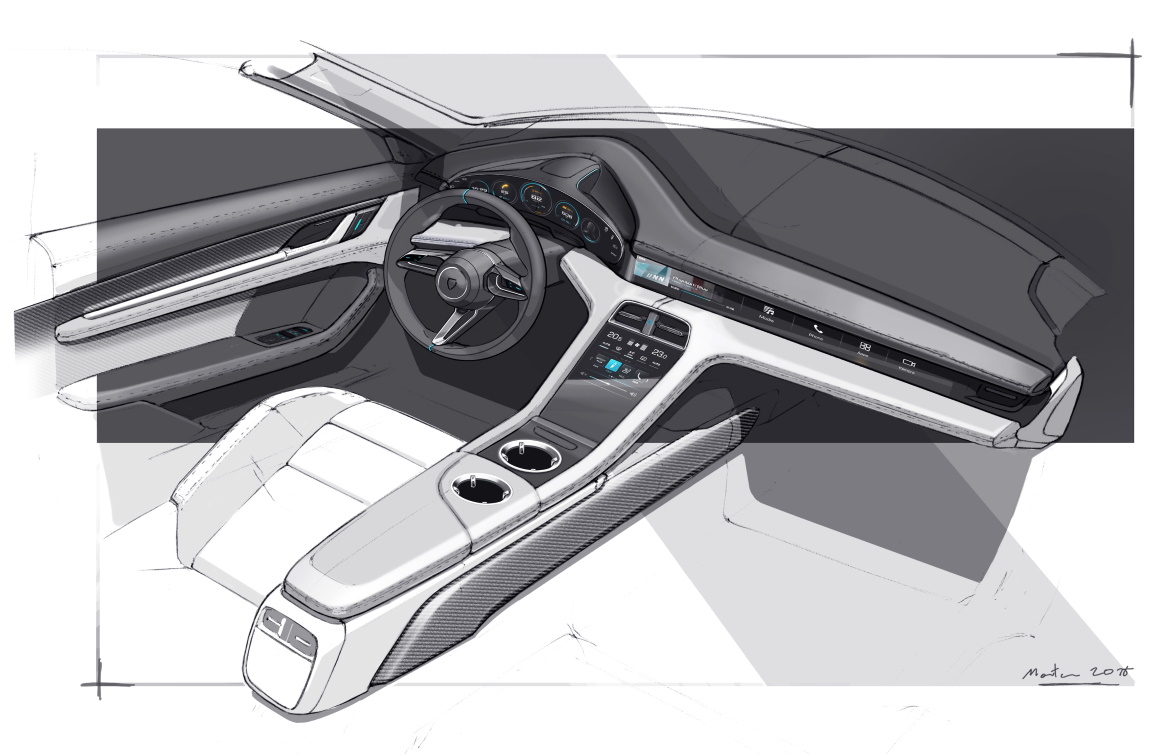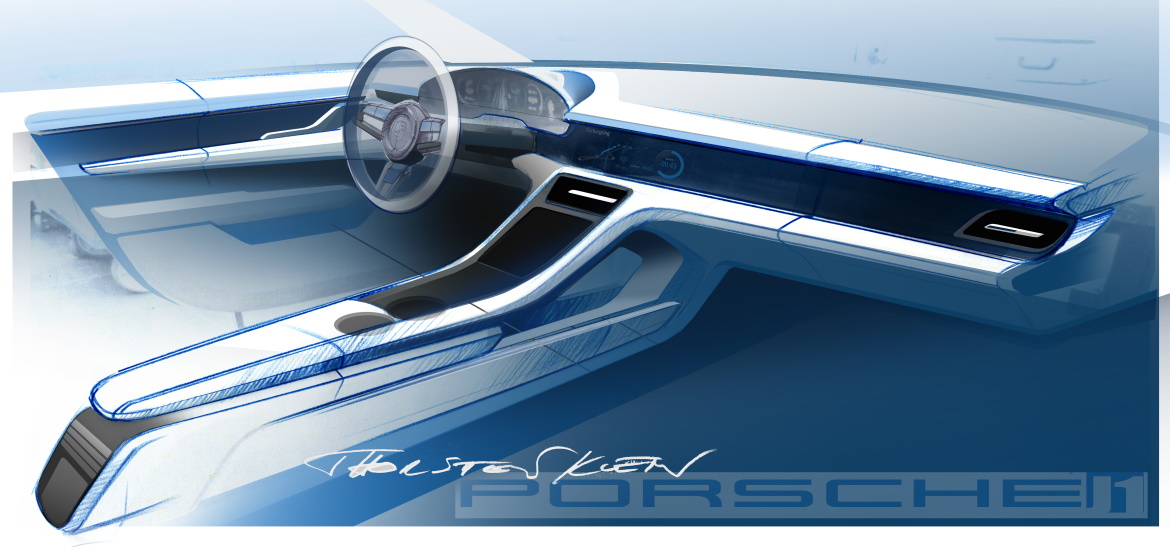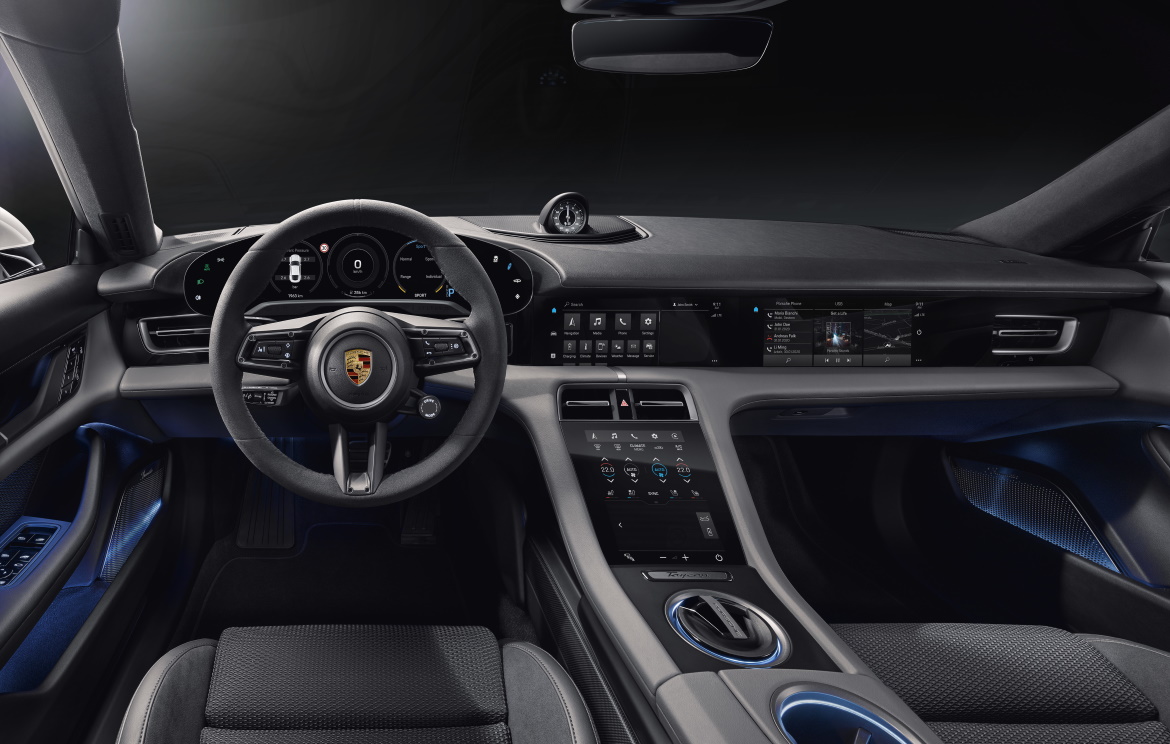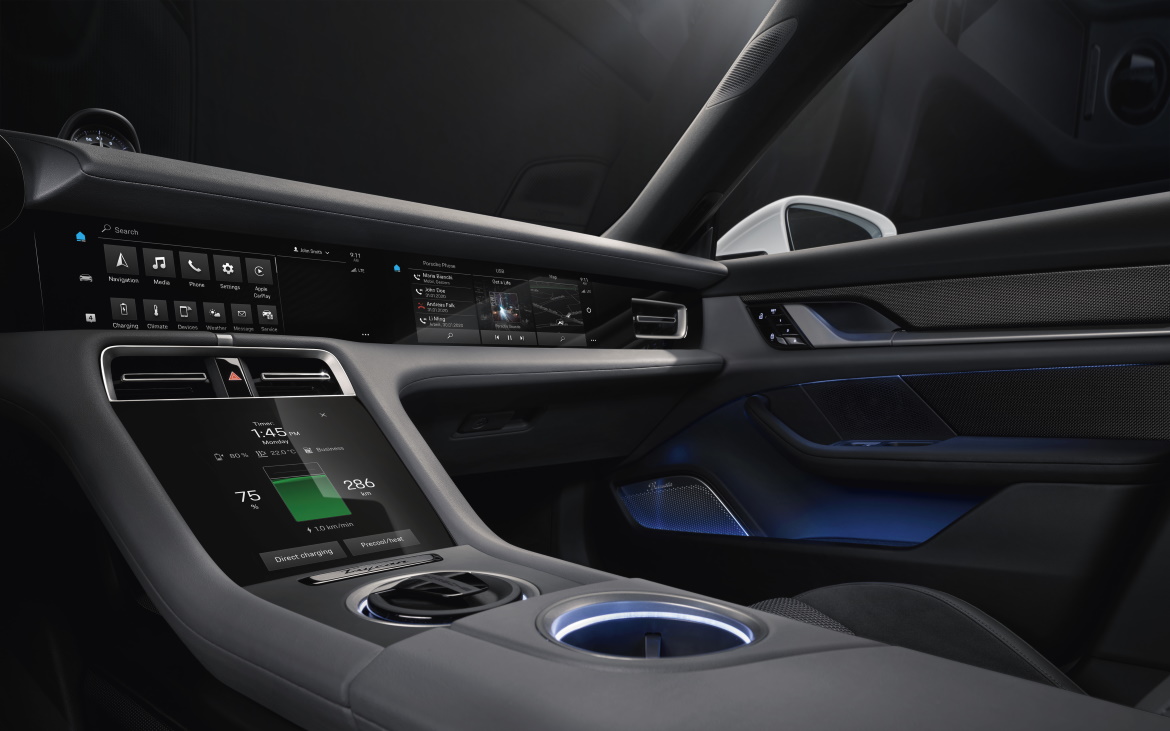Porsche is entering a new era with the new Taycan and the brand’s first all-electric sports car is setting standards in interior design. Classic design features have been reinterpreted and brought into the digital age. The original 911’s cleanly styled dashboard from 1963 was the inspiration. The stated goal was to bring it into the present day. The cockpit signals the start of a new era with its clear structure and a completely new construction. It is clearly driver-focused. The instrument panel has a clean, minimalist and ultra-modern design, and operating the controls is quick and free from distractions. The free-standing, curved instrument cluster forms the highest point on the dashboard. It is clearly focused towards the driver and ensures that everything that’s needed for driving is in view.
The innovative instrument cluster consists of a curved 16.8-inch screen with the rounded look that’s typical of Porsche. A cowl has been omitted, which ensures a slim and modern appearance in the style of high-quality smartphones and tablets. Real glass and a vapour-deposited, polarising filter give anti-reflective properties. Drivers can choose between four display modes for the instrument cluster: Classic mode (power meter) evokes the rounded instruments typical of Porsche. This display delivers information that’s clearly arranged information, allowing for fast readability. A power meter replaces the rev counter in the middle instrument. Map mode replaces the central power meter with a map layout. Full Map mode intentionally omits the round instruments in favour of a navigation map displayed across the full display. The Pure mode displays only essential driving information such as speed, traffic signs and navigation using a minimalist arrow. There are also small, touch-control fields at the edges of the screen for operating the light and chassis functions. The instrument cluster is therefore wider than the steering wheel and reminiscent of the iconic original 911.
The steering wheel has a light appearance, with two models to choose from. In addition to the basic version, which can be customised with coloured inserts as part of the accent package, Porsche also offers a GT sports steering wheel option. It has a distinctive design with visible screw heads and features a typical Porsche round mode switch which can be used to select the various driving modes. The upper and lower sections of the dashboard stretch across the entire width of the vehicle in the shape of a wing. A central 10.9-inch infotainment display and an optional passenger display are combined to form an integrated glass band in a black-panel look, thereby blending in visually with the interior. All user interfaces have been completely re-designed for the Taycan. The number of traditional hardware controls, such as switches and buttons, have been greatly reduced. Instead, control is intelligent and intuitive – via touch operation or a voice control function that responds to the command “Hey Porsche”.
All vehicle configurations for the Taycan, such as Porsche Active Suspension Management (PASM), can easily be set up on the central screen via direct access. The driver can quickly access all apps via a clearly structured and customisable home screen. Apps include navigation, telephone, media, comfort and Porsche Connect. With optimised voice control, drivers can access the required function even faster. For the first time, front passengers in the Taycan have the option of their own touch display, allowing them to easily alter settings without distracting the driver. The elevated centre console intensifies the feeling of a low seating position, as you would expect from a Porsche. It features a large 8.4-inch touch panel with haptic feedback. This allows the air-conditioning settings to be altered directly. Integrated handwriting recognition also allows quick address inputs. Every detail has been reduced to the essentials. Like the Porsche 918, the Taycan has a compact direction selector switch in the instrument panel instead of the classic selector lever.














